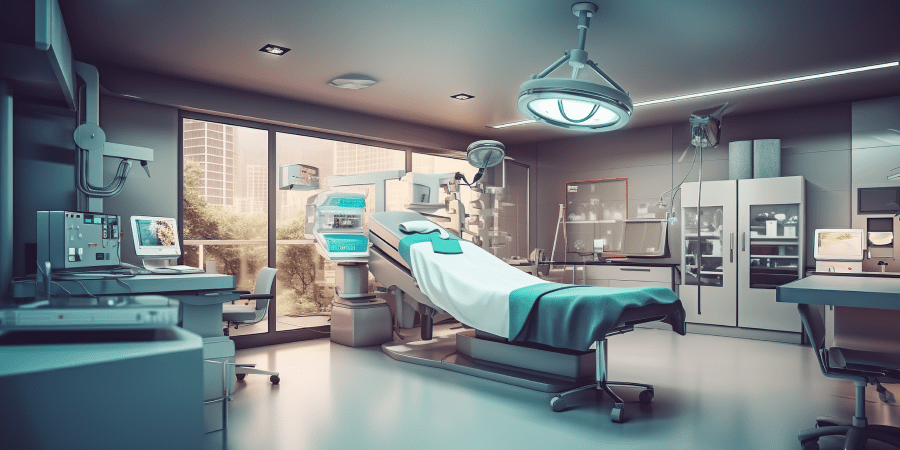In today’s world, we’re all looking for ways to be...
Revitalizing outdated hospitals requires more than just aesthetic updates; it demands a comprehensive approach to transforming these spaces to align with modern healthcare standards. Hospitals that were built decades ago often struggle to accommodate the rapid advancements in medical technology and the evolving needs of patient care. These older facilities can inadvertently hinder the delivery of high-quality care, affecting both patient outcomes and staff efficiency. Modernizing a hospital involves addressing outdated infrastructure, integrating cutting-edge technology, and redesigning patient spaces to improve comfort and functionality.
It’s about creating an environment where patients receive the best care possible, and healthcare professionals can perform their duties effectively. In this blog, we will explore a range of renovation strategies that can turn aging hospitals into state-of-the-art facilities, ready to meet the demands of today’s healthcare landscape. From enhancing infection control measures to optimizing space for collaborative care, these approaches are essential for transforming hospitals into efficient, patient-centered environments.
Key Hospital Renovation Strategies for the Modern Age
Renovating a hospital is a complex task that requires careful planning and execution to ensure that the facility meets modern standards while minimizing disruption to patient care. Here are key strategies to consider for hospital renovation in the modern age:

1. Enhance Patient Rooms for Better Comfort Efficiency
Think about how you can make every detail count in enhancing patient rooms. Start by designing spaces with abundant natural light and soothing colors to foster a calming atmosphere. Invest in adjustable lighting and ergonomic furniture that prioritizes patient comfort while also supporting efficient staff workflows. Adding space for family members is not just a hospital architect trend but it can significantly boost patients’ emotional well-being. Incorporate advanced technology, such as bedside controls for lighting and temperature, so patients can easily tailor their environment to their preferences. Make sure the room layout promotes efficient care by providing easy access to essential equipment and supplies.
2. Integrate Technology for a Smarter Hospital
Outdated hospitals often struggle with infrastructure that can’t keep up with the latest healthcare technology. To modernize, begin by integrating electronic health records (EHRs) to streamline patient information management and foster seamless communication between departments. Smart sensors and automation systems can be installed to control everything from lighting and temperature to equipment usage, boosting efficiency and lowering operational costs. Consider adding telemedicine capabilities to facilitate remote consultations and broaden access to care. Implementing real-time tracking systems for both equipment and staff can also enhance workflow and improve patient care.
3. Improving Air Quality and Infection Control
The importance of air quality and infection control in hospitals is more crucial than ever, given recent global health challenges. Installing advanced HVAC systems with high-efficiency particulate air (HEPA) filters is essential for capturing airborne contaminants and allergens. Adding air quality sensors that monitor and adjust ventilation in real-time will help maintain a clean and safe environment. Incorporate ultraviolet (UV) light systems to reduce microbial contamination on surfaces and in the air. Additionally, implementing touchless technology for doors and fixtures can minimize contact points and further limit the spread of infections. Integrating technology helps you significantly enhance air quality and strengthen infection control measures.
4. Collaborative Spaces for Healthcare Teams
Healthcare today is increasingly collaborative, requiring spaces that support teamwork among various professionals. Many outdated hospitals have layouts that inhibit this collaborative approach. To address this, integrate dedicated collaborative spaces into your design. Equip these areas with advanced technology like interactive whiteboards and video conferencing systems to facilitate real-time discussions and seamless communication among healthcare teams. Include flexible workspaces that can be reconfigured as needed to encourage spontaneous meetings and teamwork. One should also focus on minimizing noise in modern healthcare facilities to create a more conducive environment for collaboration. Hospitals should also install technology that supports secure information sharing, such as digital screens and cloud-based platforms, to ensure everyone stays informed and aligned.
5. Enhance Wayfinding Accessibility for Patients
Navigating a hospital can be really overwhelming, especially in older facilities where confusing layouts and poor signage make finding your way a challenge. To make things easier to create innovative architectural strategies for hospital wayfinding, focus on modernizing wayfinding and accessibility in your renovation plans. Start by implementing digital wayfinding systems that provide real-time directions and updates, and add clear, intuitive signage throughout the facility. Color-coded pathways can also help guide patients and visitors effortlessly from one area to another. Don’t forget about accessibility, make sure the hospital is fully accommodating to individuals with disabilities. This means adding ramps, widening doorways, and improving elevator access to ensure that every area is reachable.
6. Incorporate Sustainable Practices
Incorporating sustainable practices is a smart move that benefits both the environment and operational costs. Hospitals are notoriously energy-intensive, so making them more energy-efficient through sustainable hospital design can significantly cut down on both operational costs and environmental impact. To achieve this, consider installing energy-efficient lighting, upgrading to advanced HVAC systems, and incorporating renewable energy sources like solar panels. Additionally, using sustainable building materials and implementing water conservation measures, such as low-flow fixtures and rainwater harvesting, can contribute to a greener, more sustainable hospital.
7. Designing for Future Flexibility
Healthcare needs are constantly evolving, and your hospital design should be ready to adapt. Renovating with future flexibility in mind is crucial for keeping your facility up-to-date. Think about creating spaces that can be easily reconfigured or expanded as new demands arise. This could mean incorporating movable walls, designing modular patient rooms, and ensuring your infrastructure can support future technological upgrades. By planning for these possibilities now, you’ll avoid frequent and costly renovations down the line. Flexibility in design not only allows your facility to grow with modern healthcare demands but also makes it more resilient and cost-effective in the long run.
8. Focusing on Staff Wellbeing Productivity
The wellbeing of healthcare staff is integral to the overall functioning of a hospital, and your renovations should focus on creating environments that reduce stress and boost productivity. Start by designing ergonomic workspaces that support comfort and efficiency, and make sure there’s ample access to natural light to create a pleasant work atmosphere. Incorporate quiet areas where staff can take breaks and recharge, helping them stay refreshed and focused. Adding amenities like comfortable staff lounges, wellness centers, and outdoor spaces can significantly enhance morale and contribute to better patient care.
Wrapping Up
Revitalizing outdated hospitals involves more than just a facelift; it’s about transforming the entire healthcare experience. To create environments that truly support high-quality care, focus on improving patient comfort, integrating modern technology, and enhancing infection control. Planning for future needs is crucial, as is engaging with the community and prioritizing the wellbeing of healthcare staff. Hospitals that address these factors can become vibrant, welcoming spaces that meet the demands of modern healthcare. If you’re seeking to revamp your hospital design, consult Inner Value Architect for tailored advice. Their expertise will ensure your renovation effectively tackles all these aspects, leading to a facility that significantly enhances both patient and staff experiences.










